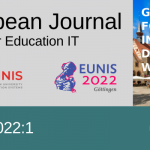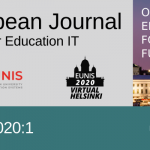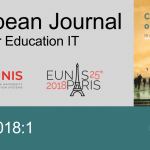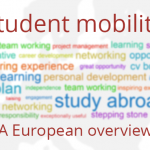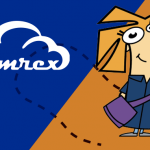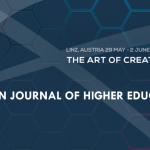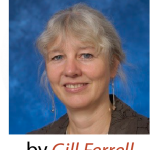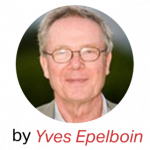 Much has been said about MOOCs in terms of technology. At the same time, surprisingly, MOOCs are quickly disappearing from the Gartner hype curve. But are MOOCs a technology? Why such a rapid disappearance?
Much has been said about MOOCs in terms of technology. At the same time, surprisingly, MOOCs are quickly disappearing from the Gartner hype curve. But are MOOCs a technology? Why such a rapid disappearance?
I have a very simple explanation: MOOCs are a means to learn and to acquire knowledge through already mature technologies but they are not a technology by themselves, thus no reason to follow the hype curve. And if they do, it will be at the pace of the pedagogy, i.e. a very slow pace, as usually do all transformations of human societies. The tsunami is yet to come.
So what did the MOOCs brought in terms of technology?
Since the beginning of this century, I have been using four different well-known Learning Management Systems and I can testify that, up to now, the new ones, being developed for MOOCs, did not bring much as novelties for pedagogy. Pair assessment was quite an exception and the development of this new tool was mainly motivated by the fact that it was unrealistic for the teachers to review hundreds and thousands of copies. The LMS communities reacted quickly and integrated this tool in their latest edition. And then, teachers started to imagine how to use it and how to make it part of their blended pedagogy, not to let the students do their job, but to introduce a new form of participation and collaboration between them. At the same time, the appearance of MOOCs had the effect of amplifying the collaborative and social use of conventional platforms.
This is rather funny because the social dimension of MOOC platforms was presented as the main improvement over the previous generation of platforms, but in reality there was nothing new! MOOCs are using the good old forums, which already existed in Moodle, Claroline, Sakai, WebCT (I quote the platforms I know) and many others tools, which existed in these platforms, were ignored, such as chats, for instance. In the past the forums had little success. I remember a WebCT user conference, around 2005, in Barcelona, where many of us complained about our empty forums. Only those responsible for distance education could boast genuine exchanges. The reason for the success of forums, nowadays in the MOOCs, is the distance between the participants and the desire to share in a community. I doubt that they are much successful in SPOCs, i.e. in blended learning, because students have many opportunities to meet and exchange on the campus. I would be very pleased to receive more information about this. Many teachers supplement their MOOCs with Facebook groups, without forgetting the Google+ Hangouts and other systems to distribute live video. There is therefore an obvious lack of social tools in the MOOC platforms today. This is not a criticism. The development of a platform, with all its richness and its pedagogic nuances, is much trickier than the developers think: so it takes time.
The only novelty of modern platforms is their ability to hold a large number of students simultaneously. Which is a good reason to continue to use the old education platforms, which now are implemented in most universities and schools, when one want to create a SPOC for blended learning.
The MOOC platforms are still in their infancy.
A learning platform is a set of digital tools … used for learning and teaching, which implies that these tools are designed with an underlying vision of a pedagogy. Thus, using a platform implies to join this vision. Teaching cannot be reduced to a singular approach because there is not a single method for teaching or learning; pedagogies are diverse. A given LMS tries to answer, as well as possible, to the expectations of its developers. Designers translate their vision in their tools. I remember a very interesting exchange, at EUNIS 2005, in Manchester, between those responsible for Moodle and Sakai. After a passionate debate, they came to the conclusion that Moodle is organized around a fairly constructivist pedagogical vision and imposes a fairly well defined pedagogical approach. Sakai is much more liberal and rather emphasizes the collaborative aspects. For instance Moodle has several tools for building questionnaires, each thought with a clear different vision on how to build an assessment; Sakai has a unique tool, which mixes all approaches. Using a given platform, the teacher must accommodate his/her vision with the underlying vision of the platform! This is not always easy and, in a given university, not everybody will agree on a single approach and a single platform cannot please everybody. When the vision is strict, some teachers may complain that they are confined but the use of the platform is simpler: the number of choices being limited avoids exploring a number of possibilities. When the vision is more liberal, the use of the LMS is more difficult because teachers must make a choice among numerous features. From the educational point of view there is therefore no ideal platform. Each LMS offers its own vision, which is deeply carved in its tools and services. It always irritates me when I read reports, comparing platforms, mainly as a catalog of existing or non-existing services and little or nothing is said about the versatility in their use, the options to get out of a scheme and about the pedagogical approaches. Assessing the underlying pedagogy is the very difficult because a good test would be to design several courses, with different teachers, and to use them with students in the different platforms. So I refute these reports, which consist mainly of tables checking the existence of tools and services, like for ordinary software. And a LMS is not ordinary software!
A good LMS would be like a bouquet of flowers: the teacher would assemble services like choosing colors, shapes and fragrances. He would no longer be forced to a limited set of services strongly linked to only one platform and would be able to assemble the ones of his/her choice: a mixture of Moodle, Sakai, Claroline Connect, edX and many others. This is a dream today but may become a reality if the developers want to. Standards, such as LTI, define interfaces that allow various tools to communicate. The concept of virtual machines, in the cloud, allows designing the platform of the future as a set of virtual servers, each allocated to a single function, dialoguing with all the others, and not as a single bundle as today. Building a LMS will be reduced to interconnecting the servers of his choice.
We must pay attention and encourage open source consortia as Apereo trying to put under one single roof various initiatives, advocating complementarity rather than competition. The true open platform of the future will be a learning platform made of different brands and names.
The expert teacher will compose his/her bouquet; the non-expert will choose among bouquets already prepared by specialists. It means that, in universities, we must recruit or train new professionals, both pedagogical designers, computer scientists and also with an experience of teaching, who will be responsible for building bouquets on demand according to the professors and students expectations. This will allow all kinds of pedagogy, a mixture of c-MOOC and x-MOOC.
To summarize, what shall we remember about the impact of technology on MOOC educational platforms? It is not their ability to hold the load of thousands of learners. It is the possibility, very soon, to customize them according to the desiderata of the end users, i.e. the teachers and the students. But as this customization will be too complex for most teachers, it will be necessary for them to work with other people, specialists in technology and pedagogy. Their courses will become a group project!
Teaching will be less and less the isolated act of a single teacher in front of his students and sole master of the place. This is becoming the project of an entire team, as it is already the case for the MOOCs. It is maybe one of the most important features of the MOOC revolution and we must be prepared.

